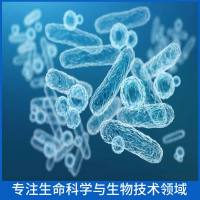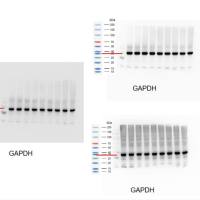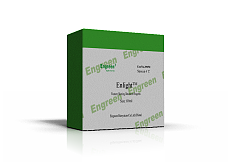【资源】Nature Reviews Immunology 2011年11月刊
丁香园论坛
899
Table of contents
November 2011 Vol 11 No 11

About the cover
In this issue
p713 | doi:10.1038/nri3102
Editorial: Nobel Prize to immunology
p714 | doi:10.1038/nri3103
Top of page
Research Highlights
Immunotherapy: Stopping monocytes in their tracks | PDF (416 KB)
p715 | doi:10.1038/nri3096
Therapeutic targeting of inflammatory monocyte migration attenuates disease severity.
T cell memory: The stem of T cell memory | PDF (283 KB)
p716 | doi:10.1038/nri3098
Identification of human T memory stem cells with increased therapeutic potential.
B cell signalling: Right place, right time | PDF (150 KB)
p716 | doi:10.1038/nri3100
BCR endocytosis compartmentalizes kinase phosphorylation and downstream signalling.
T cell memory: Exhausted T cells miss out on methylation | PDF (190 KB)
p718 | doi:10.1038/nri3093
The inhibitory signal to T cells through PD1 is sustained during chronic viral infection by epigenetic mechanisms.
Tumour immunology: IFNs boost cancer killers | PDF (235 KB)
p718 | doi:10.1038/nri3094
Type I IFN targets CD8α+ DCs for the initiation of antitumour immunity.
Immune tolerance: Suicide is painless | PDF (437 KB)
p719 | doi:10.1038/nri3092
Self-reactive T cells invade and are degraded in hepatocytes, preventing autoimmune disease.
T cells: Lymphoid stroma says NO to activated T cells | PDF (211 KB)
p720 | doi:10.1038/nri3090
Activated T cells induce the production of immunosuppressive nitric oxide by stromal cells.
Neuroimmunology: Nervous ChAT | PDF (208 KB)
p720 | doi:10.1038/nri3091
Acetylcholine-producing T cells convey neural signals to dampen inflammation.
Mucosal immunology: Colonic creatures are TReg teachers | PDF (317 KB)
p721 | doi:10.1038/nri3099
Most regulatory T cells in the colon are specific for commensal bacteria.
In brief
Macrophages: Arteriogenic macrophages protect against ischaemia | PDF (124 KB)
p716 | doi:10.1038/nri3097
Monocytes: How a high-fat diet results in monocytosis | PDF (124 KB)
p716 | doi:10.1038/nri3104
Technique: Recapitulating human TB in vitro | PDF (124 KB)
p716 | doi:10.1038/nri3105
T cells: Natural TH17 cell development in the thymus | PDF (113 KB)
p717 | doi:10.1038/nri3101
Cytokines: IL-1 family member dampens intestinal inflammation | PDF (113 KB)
p717 | doi:10.1038/nri3106
Innate immunity: The function of innate lymphoid cells in the lung | PDF (113 KB)
p717 | doi:10.1038/nri3107
Top of page
Focus on: Monocytes and macrophages
Reviews
Protective and pathogenic functions of macrophage subsets
Peter J. Murray & Thomas A. Wynn
p723 | doi:10.1038/nri3073
Macrophages exhibit remarkable plasticity and adopt pro- or anti-inflammatory phenotypes in response to environmental signals. This Review article by Murray and Wynn discusses the different macrophage subsets and their contribution to tissue homeostasis and disease pathogenesis.
Macrophage-mediated inflammation in metabolic disease
Ajay Chawla, Khoa D. Nguyen & Y. P. Sharon Goh
p738 | doi:10.1038/nri3071
Inflammation in adipose tissue is known to mediate insulin resistance in obesity, and macrophages are thought to have a central role in mediating this inflammatory response. But adipose tissue macrophages are not all bad: alternative activation of these cells promotes insulin sensitivity.
Transcriptional regulation of macrophage polarization: enabling diversity with identity
Toby Lawrence & Gioacchino Natoli
p750 | doi:10.1038/nri3088
This Review describes the key transcription factors that enable the polarization of macrophages in response to the microenvironment in the context of a regulatory landscape that determines macrophage identity.
Monocyte recruitment during infection and inflammation
Chao Shi & Eric G. Pamer
p762 | doi:10.1038/nri3070
Monocytes serve as precursors for various tissue macrophage and dendritic cell populations and contribute to both protective and pathological immune responses. Here, the authors describe the mechanisms that are involved in mobilizing monocytes to distinct tissue sites, both during steady-state conditions and in response to infection.
Microglial cell origin and phenotypes in health and disease
Kaoru Saijo & Christopher K. Glass
p775 | doi:10.1038/nri3086
Microglia are brain-resident macrophages with a distinct origin. This Review discusses the development and function of these cells, and describes the association between the different microglial cell phenotypes and disease.
Studying the mononuclear phagocyte system in the molecular age
Andrew Chow, Brian D. Brown & Miriam Merad
p788 | doi:10.1038/nri3087
Immunologists are making good progress in unravelling the intricacies of the mononuclear phagocyte system, and this is largely due to recent technological advances. This article describes the current tools that exist for studying the origins and functions of mononuclear phagocytes and discusses the future technologies that will enable further progress in the field.
November 2011 Vol 11 No 11

About the cover
In this issue
p713 | doi:10.1038/nri3102
Editorial: Nobel Prize to immunology
p714 | doi:10.1038/nri3103
Top of page
Research Highlights
Immunotherapy: Stopping monocytes in their tracks | PDF (416 KB)
p715 | doi:10.1038/nri3096
Therapeutic targeting of inflammatory monocyte migration attenuates disease severity.
T cell memory: The stem of T cell memory | PDF (283 KB)
p716 | doi:10.1038/nri3098
Identification of human T memory stem cells with increased therapeutic potential.
B cell signalling: Right place, right time | PDF (150 KB)
p716 | doi:10.1038/nri3100
BCR endocytosis compartmentalizes kinase phosphorylation and downstream signalling.
T cell memory: Exhausted T cells miss out on methylation | PDF (190 KB)
p718 | doi:10.1038/nri3093
The inhibitory signal to T cells through PD1 is sustained during chronic viral infection by epigenetic mechanisms.
Tumour immunology: IFNs boost cancer killers | PDF (235 KB)
p718 | doi:10.1038/nri3094
Type I IFN targets CD8α+ DCs for the initiation of antitumour immunity.
Immune tolerance: Suicide is painless | PDF (437 KB)
p719 | doi:10.1038/nri3092
Self-reactive T cells invade and are degraded in hepatocytes, preventing autoimmune disease.
T cells: Lymphoid stroma says NO to activated T cells | PDF (211 KB)
p720 | doi:10.1038/nri3090
Activated T cells induce the production of immunosuppressive nitric oxide by stromal cells.
Neuroimmunology: Nervous ChAT | PDF (208 KB)
p720 | doi:10.1038/nri3091
Acetylcholine-producing T cells convey neural signals to dampen inflammation.
Mucosal immunology: Colonic creatures are TReg teachers | PDF (317 KB)
p721 | doi:10.1038/nri3099
Most regulatory T cells in the colon are specific for commensal bacteria.
In brief
Macrophages: Arteriogenic macrophages protect against ischaemia | PDF (124 KB)
p716 | doi:10.1038/nri3097
Monocytes: How a high-fat diet results in monocytosis | PDF (124 KB)
p716 | doi:10.1038/nri3104
Technique: Recapitulating human TB in vitro | PDF (124 KB)
p716 | doi:10.1038/nri3105
T cells: Natural TH17 cell development in the thymus | PDF (113 KB)
p717 | doi:10.1038/nri3101
Cytokines: IL-1 family member dampens intestinal inflammation | PDF (113 KB)
p717 | doi:10.1038/nri3106
Innate immunity: The function of innate lymphoid cells in the lung | PDF (113 KB)
p717 | doi:10.1038/nri3107
Top of page
Focus on: Monocytes and macrophages
Reviews
Protective and pathogenic functions of macrophage subsets
Peter J. Murray & Thomas A. Wynn
p723 | doi:10.1038/nri3073
Macrophages exhibit remarkable plasticity and adopt pro- or anti-inflammatory phenotypes in response to environmental signals. This Review article by Murray and Wynn discusses the different macrophage subsets and their contribution to tissue homeostasis and disease pathogenesis.
Macrophage-mediated inflammation in metabolic disease
Ajay Chawla, Khoa D. Nguyen & Y. P. Sharon Goh
p738 | doi:10.1038/nri3071
Inflammation in adipose tissue is known to mediate insulin resistance in obesity, and macrophages are thought to have a central role in mediating this inflammatory response. But adipose tissue macrophages are not all bad: alternative activation of these cells promotes insulin sensitivity.
Transcriptional regulation of macrophage polarization: enabling diversity with identity
Toby Lawrence & Gioacchino Natoli
p750 | doi:10.1038/nri3088
This Review describes the key transcription factors that enable the polarization of macrophages in response to the microenvironment in the context of a regulatory landscape that determines macrophage identity.
Monocyte recruitment during infection and inflammation
Chao Shi & Eric G. Pamer
p762 | doi:10.1038/nri3070
Monocytes serve as precursors for various tissue macrophage and dendritic cell populations and contribute to both protective and pathological immune responses. Here, the authors describe the mechanisms that are involved in mobilizing monocytes to distinct tissue sites, both during steady-state conditions and in response to infection.
Microglial cell origin and phenotypes in health and disease
Kaoru Saijo & Christopher K. Glass
p775 | doi:10.1038/nri3086
Microglia are brain-resident macrophages with a distinct origin. This Review discusses the development and function of these cells, and describes the association between the different microglial cell phenotypes and disease.
Studying the mononuclear phagocyte system in the molecular age
Andrew Chow, Brian D. Brown & Miriam Merad
p788 | doi:10.1038/nri3087
Immunologists are making good progress in unravelling the intricacies of the mononuclear phagocyte system, and this is largely due to recent technological advances. This article describes the current tools that exist for studying the origins and functions of mononuclear phagocytes and discusses the future technologies that will enable further progress in the field.









